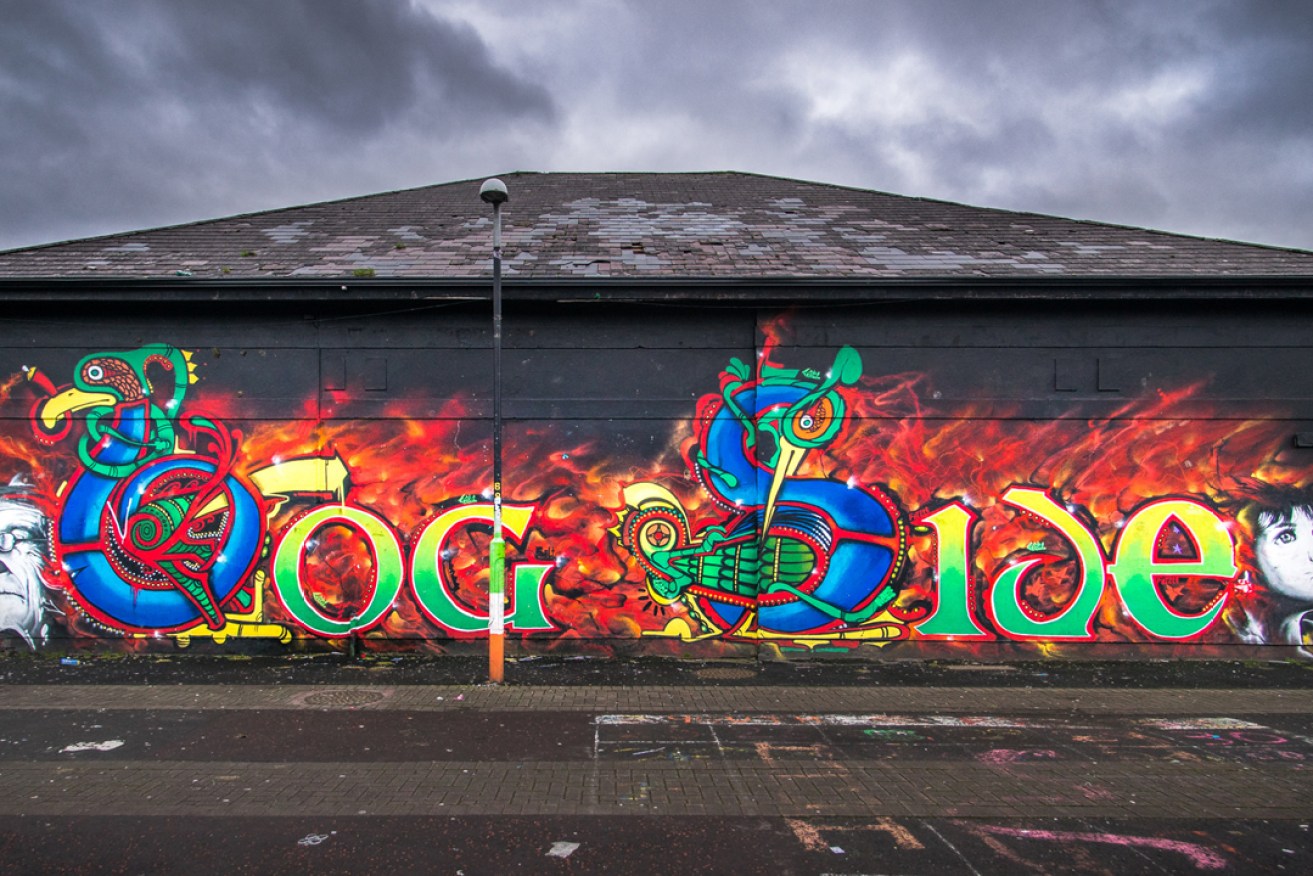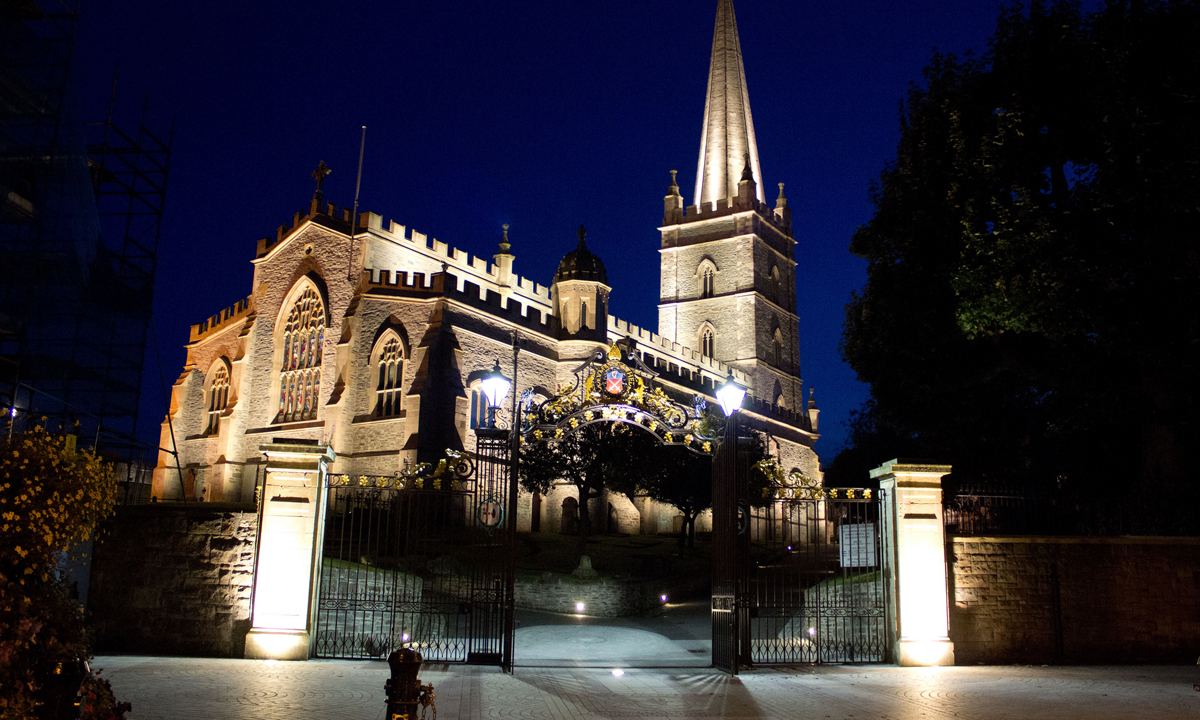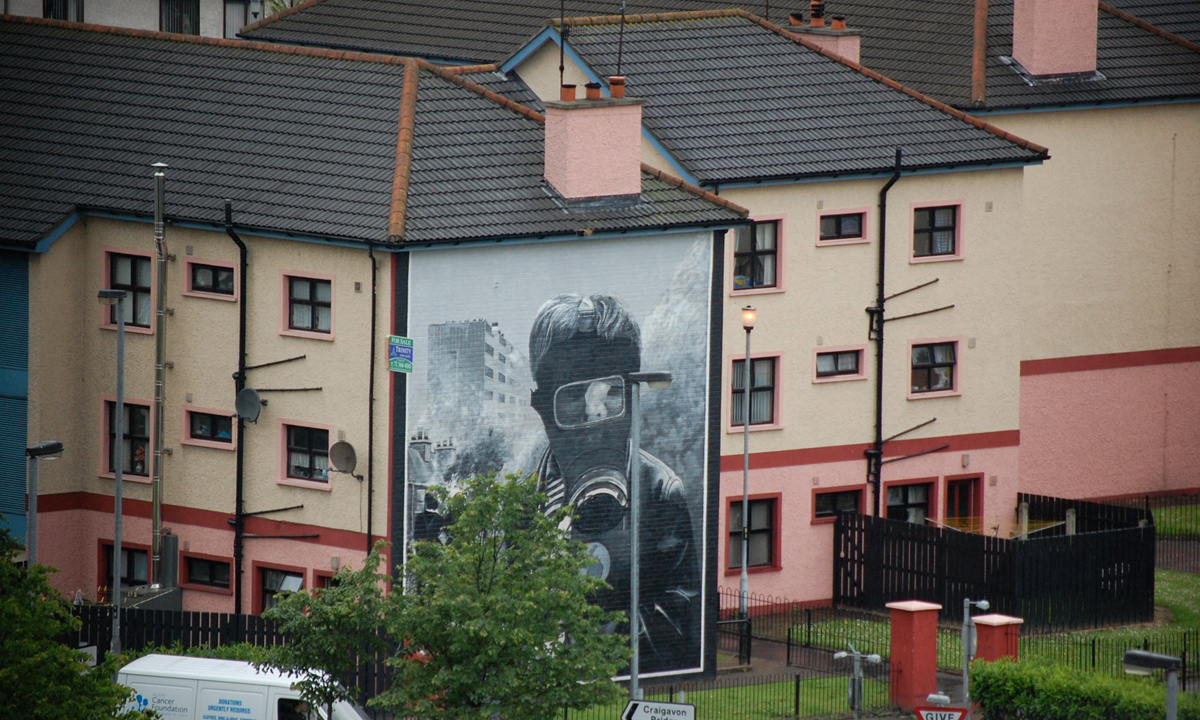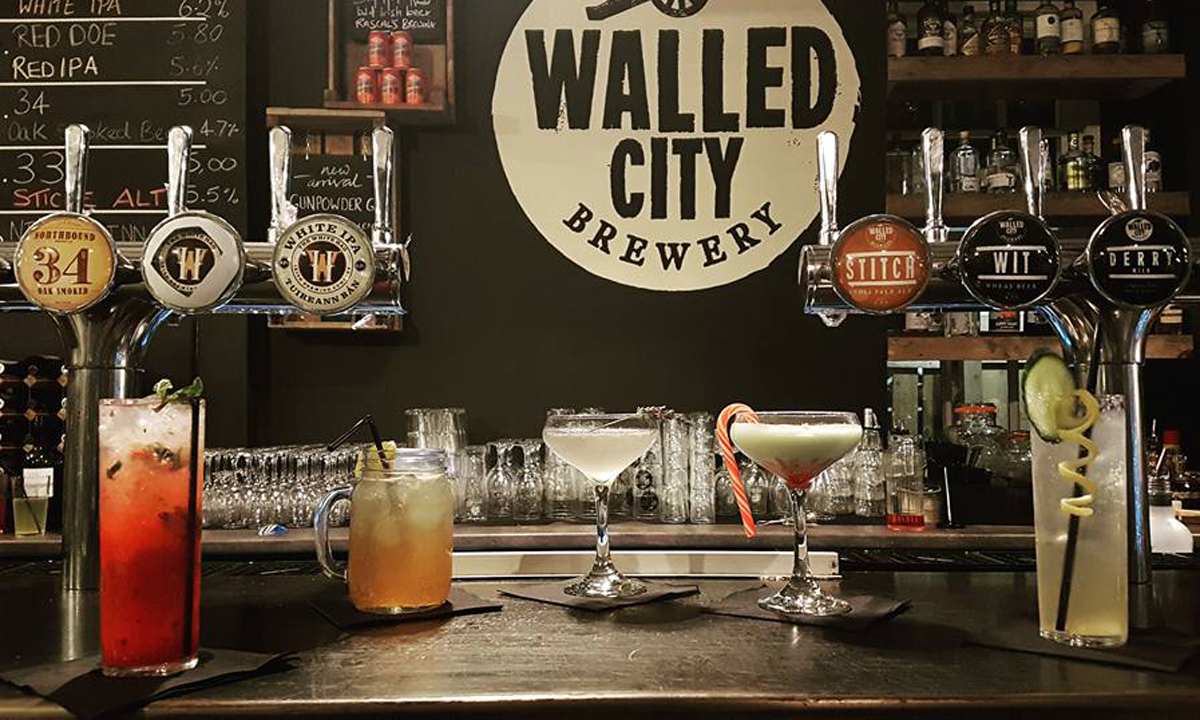Troubles seem far away from Londonderry
The Northern Irish city of Londonderry has had a turbulent past, but in these more peaceful times it has plenty to offer tourists – including ‘longboard’ tours, thought-provoking street murals, and Irish whiskey porridge.

A mural in Londonderry's Bogside district. Photo: Giuseppe Milo / www.pixael.com/en/blog
My greying rocker guide, Garbhan, does an impromptu wiggle as he proudly talks about Londonderry’s musical past.
The Undertones, a band made famous by the late BBC Radio One DJ John Peel, hailed from the Northern Irish city, commonly known as Derry. Their memory lives on as Garbhan performs an uninhibited and slightly off-balance half-kick in homage to the band’s signature 1978 punk song Teenage Kicks.
It’s a serious case of dad dancing, but his merry, unabashed performance seems to sum up a city now at ease with itself.
Garbhan is on first-name terms with every passerby as we stroll along a walkway on top of Derry’s 17th-century walls. This is the only completely walled Irish city, originally built as a defence for settlers from England and Scotland.

St Columb’s Cathedral is a major city landmark.
It’s true, Derry has suffered a turbulent past. The longest siege in British military history took place here in 1689 when 30,000 protestants held the city against English Catholic king James II.
I count my blessings when, later that day, I visit the Siege Museum and discover only dogs’ heads, rats and mice were on the menu for those brave souls who refused to surrender.
The city also played a prominent role during the Troubles and it’s widely believed the Northern Ireland conflict (which lasted from the late 1960s until the 1990s) started here.
Just outside the ramparts, I stroll through the republican Bogside district and the People’s Gallery, where peacetime murals reflect on this period and depict civil rights protests.

One of the many Bogside murals reflecting on Londonderry’s past.
But now Derry’s face is turned firmly to the future, and having fun is the order of the day.
Sampling an exhilarating sport imported from Hawaii, I whizz along the River Foyle through a network of parks and paths on a longboard (a longer version of a skateboard).
My route finishes at the Walled City Brewery and the weather feels distinctly Hawaiian as I stop for full-bodied craft stout and comfort food served al fresco.
Sitting in the sunshine I contemplate how far Derry has come. Peace has replaced conflict, and the historic walls have been transformed from a noose to a necklace, decorated with plenty of dazzling jewels worth visiting.

Popular watering hole the Walled City Brewery.
Where to stay: Bishops Gate Hotel. Frequented by WB Yeats and Winston Churchill, the Northern Countries Club has been transformed into a hotel that opened last year. Original features include a revolving entrance door, the Edwardian-style Hervey Library and a 17th-century well. Try the Irish whiskey and fruit porridge for breakfast – it comes with its own mini-shot of the hard stuff.
What to do: Walled City Tour – Martin McCrossan Tours organises a guided walk along the mile-long city walls. Visit the Roaring Meg cannon in the Double Bastion in the western corner, and head to “the catwalk”, a stretch where 19th-century gentry once paraded in their finery. The Bogside murals painted after the 1994 paramilitary ceasefires are also clearly visible from here. Visit derrycitytours.com.
Boom Board Tours – Longboarding first started in Hawaii. When the ocean was flat, frustrated surfers took to the streets on boards with wheels. Now it’s a popular sport worldwide and is used as an alternative way of sightseeing in Derry. The two-hour tour starts with a lesson in St Columb’s Park then takes in the historic streets of Derry as well as the Ebrington Square former army barracks. It ends at the Walled City Brewery for refreshments. Visit farandwild.org/tours/boom-boards.
What to see: The Museum of Free Derry – This new museum is located on the site of the 1972 Bloody Sunday massacre, where soldiers shot dead 13 innocent civil rights protesters. The blood-stained handkerchief waved by a priest who led the victims to safety is on display, along with the torn jacket of one of those injured. Watch the audiovisual display on a public inquiry into the Bloody Sunday slaughter – it features emotive footage of the dead men’s relatives declaring their loved ones have finally been proved innocent.
St Columb’s Cathedral – The Gothic Anglican Cathedral was built in the 1600s and is a major landmark on the city skyline. It has displays of artefacts from the Siege and a fine collection of silver Communion plates. The church is dedicated to St. Columba (Columb), the Ulster monk who established a Christian settlement here in the sixth century.
Where to drink: The Walled City Brewery – This gastro pub is located in the corner of the former Ebrington Barracks used by soldiers during the Troubles. The plush new premises includes a feature wall of crushed brown beer bottles (minus any sharp edges) and the company is fermenting a special brew using a recipe from 1689, the year of the Siege, which will be ready in August.
Where to eat: Brown’s Restaurant – Try the six-course tasting menu at this fine-dining restaurant in Derry’s Waterside district on the east side of the River Foyle. The ambience is friendly and the decor understated, with a cosy snug for pre-dinner drinks. The restaurant is open for lunch and dinner and has sister restaurants in the area.
-PA




